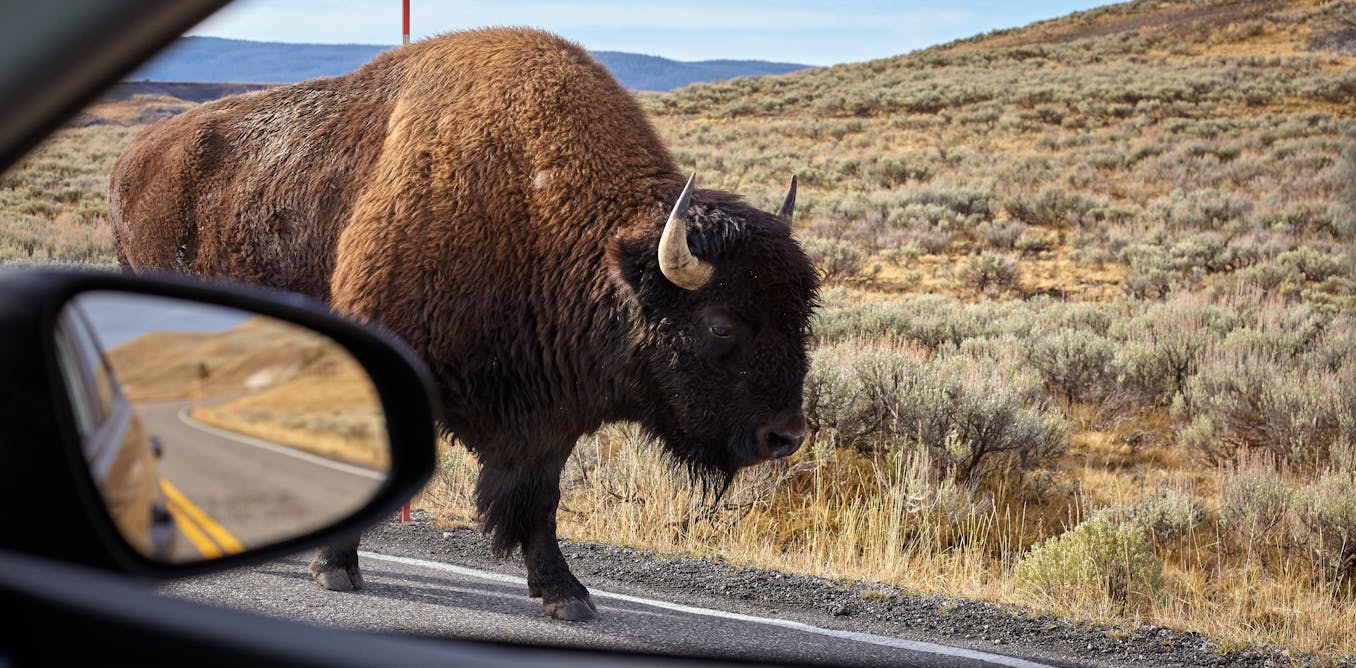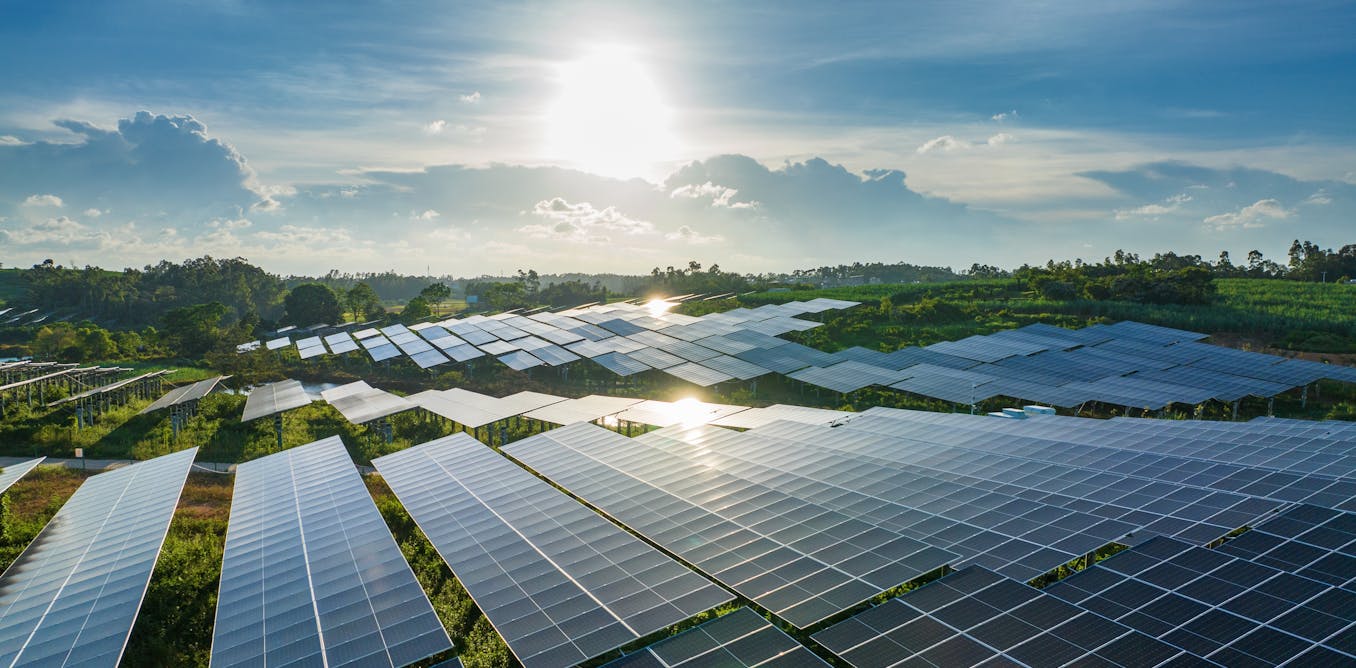In a universe filled with mysteries and cosmic wonders, there are objects and forces that may pose a threat to our very existence here on Earth. Welcome to WatchMojo, where we explore the top 10 objects that might destroy our planet, based on the most concerning possibilities, even if they are only a very remote possibility.
From galactic storms to black holes, comets, and more, these potential threats could have catastrophic consequences for life on Earth. Imagine the impact of a gamma-ray burst, a solar flare, or the discovery of dark matter on our planet. Neutron stars, rogue planets, and asteroids also make the list as objects that could spell doom for humanity if they were to intersect with Earth’s orbit.
As we look to the skies and beyond, it’s crucial to stay informed about the potential dangers that lurk in the vast expanse of space. Scientists and space agencies are actively monitoring these objects and forces to develop strategies for mitigation and defense against possible threats.
So, which object do you think poses the most imminent danger to our planet? Join the conversation in the comments and share your thoughts on what might spell disaster for Earth. And don’t forget to check out more space-related videos from WatchMojo to delve deeper into the mysteries of the cosmos. It’s time to start building your doomsday shelter and prepare for the unknown threats that may come our way.
Watch the video by WatchMojo.com
Almost 4 billion years after life on Earth began the last people are gone welcome to watch Mojo and today we’re counting down the most concerning objects and forces that could theoretically threaten our planet even if it’s only a very remote possibility on a cosmic scale neutron stars may be pint-sized but they
Sure pack a serious punch number 10 Galactic storms Mass interstellar clouds or shock waves resulting from events like supern noi have the potential to influence the Dynamics of our solar system the vast distances between Stellar objects typically limit direct impacts but the indirect effects of shock waves or Interstellar material entering the solar
System could have consequences for planetary atmospheres and celestial bodies the ort Cloud a region of icy bodies surrounding the solar system might be perturbed by the passage of a galactic storm leading to an increased likelihood of comets entering the inner solar system number nine gamma ray bursts intense and brief emissions of
Gamay radiation originate from distant supern noi or other high energy astrophysical events most grbs occur far beyond our galaxy but the potential consequences of a nearby burst are significant in the first minutes after the disaster billions of people are already dead or dying in the Impact Zone
A close- range GR could deplete the ozone layer exposing Earth to harmful ultraviolet radiation and impacting the biosphere when the Gamay burst slammed into Earth’s atmosphere it ripped apart the ozone layer exposing the survivors to a new radiation threat researchers monitor the cosmos for grbs using space-based observations like NASA’s Swift satellite
Understanding the origins and characteristics of grbs is crucial for assessing the potential threats they pose to Earth and developing strategies to mitigate their impact despite their Rarity the extreme energy released in gamma ray bursts underscores the need for continued vigilance number eight Interstellar dust clouds vast regions of microscopic particles and matter between
Stars could influence our solar system if encountered these clouds are sparse yet the potential impact on our heliosphere the region influenced by the sun’s solar wind could lead to changes in cosmic ray levels and impact the outer reaches of our solar system scientists study the Dynamics of Interstellar dust clouds using space
Observatories and missions to better understand their composition density and potential effects on our Cosmic neighborhood understanding these Interstellar phenomena contributes to our broader comprehension of the interstellar medium and its interactions with our solar system number seven large solar flares sudden bursts of energy and radiation from the sun’s surface have
The potential to impact Earth’s technological infrastructure and atmospheric conditions a solar flare is a giant burst of X-rays and energy large solar flares known as x-class flares can release vast amounts of energy the 1859 Carrington event one of the most powerful solar flares recorded caused widespread disruptions to Telegraph
Systems it crippled telegraphs around the world as Sparks flew from equipment a modern occurrence could lead to severe consequences for our interconnected GL Global Systems affecting communication networks power grids and satellites space agencies like NASA actively monitor the sun’s activity using solar observatories to predict and understand
Solar flares a solar storm of that magnitude today has the potential to cost nearly $2 trillion number six black holes regions of SpaceTime with gravitational forces so strong that nothing not even light can escape are generally formed from the collapse of massive stars black holes are the most
Mind-blowing things in the universe to be clear the idea of a black hole approaching our solar system is largely speculative however the potential consequences of such an event are profound the gravitational influence of a black hole passing through the solar system could disrupt the orbits of planets asteroids and comets leading to
Celestial chaos if it were dropped in our solar system Mercury Venus Earth and Mars would all be trapped inside the Event Horizon the extreme tidal forces near a black hole could have far-reaching effects on nearby objects despite the astronomical distances between our solar system and known black
Holes this still could be relevant to life on Earth the number of black holes in the universe is increasing and they’re getting bigger number five Dark Matter this mysterious and Elusive form of matter that does not emit absorb or reflect light constitutes a sign significant portion of the total mass in
The universe the substance neither emits nor reflects light and because of that it cannot be seen dark matter is thought to interact gravitationally with visible matter but its exact nature remains unknown hypothetically Dark Matter structures passing through the solar system could have gravitational effects on celestial bodies potentially
Influencing their orbits if such a clump of material passes through or near our solar system its gravitational force could have a profound effect the precise consequences of such interactions are challenging to predict given the current limitations in our understanding of Dark Matter properties astrophysical experiments and observations aimed at
Detecting and characterizing dark matter are helping to unravel the mysteries of this elusive substance if Earth were to leave the goldilock Zone life for human kind and everything we know would be changed forever number four neutron stars remnants of massive stars that have undergone Supernova explosions are incredibly dense and possess powerful
Gravitational and electromagnetic fields they destroy planets they can even destroy Stars while neutron stars are typically found at considerable distances from Earth the potential consequences of one entering our solar system are significant the gravitational influence of a neutron star could perturb the orbits of planets asteroids and comets leading to
Celestial instability neutron stars Manhattan sized but with a mass twice that of our sun the intense radiation emitted by a close-range neutron star could also have detrimental effects on the atmospheres of nearby celestial bodies if I had the choice between falling into a neutron star versus a
Black hole I think I’d pick the black hole number three rogue planets free floating planets are celestial bodies that lack a parent star and drift through Interstellar space their prevalence remains uncertain though the possibility of a rogue Planet intersecting with our solar system raises intriguing and potentially hazardous scenarios the Rogue planet’s
Rings have hit the atmosphere the gravitational influence of a rogue planet on the orbits of existing solar system bodies could lead to unpredictable consequences including potential collisions with planets like Earth finally the pole of the Rogue planet’s gravity is so so strong Earth can no longer hold its shape astrophysicists and astronomers actively
Study the cosmos to detect and characterize these wandering celestial bodies improving our understanding of their prevalence and trajectories ongoing research enhances our ability to anticipate and model the Dynamics of such encounters number two comets composed of ice dust and volatile gases comets pose a threat when their elliptical orbits bring them close to
Earth collisions with comets can result in significant energy releases with potential consequences ranging from localized impacts to Global disruptions someday this science fiction scenario could become a devastating reality the tunguska event in 1908 often attributed to a comet or asteroid explosion flattened an estimated 80 million trees
Over 830 square miles in Siberia NASA’s efforts in Comet observation and tracking contributes to understanding their trajectories and assessing potential threats developing Technologies for Comet deflection or mitigation strategies remains a critical aspect of planetary defense you’re talking about minimum of temperatures around 1500 Kelvin so anyone who’s outside when that event occurs would
Essentially be vaporized almost before we continue be sure to subscribe to our Channel and ring the bell to get notified about our latest videos you have the option to be notified for occasional videos or all of them if you’re on your phone make sure you go into settings and switch on your
Notifications number one asteroids and meteoroids the rocky bodies orbiting the Sun that are known as asteroids and the smaller fragments of asteroids known as meteoroids can become hazardous when their trajectories intersect with Earth’s orbit this is what we can expect from an asteroid impact if our luck
Doesn’t hold out the impact of a sizable asteroid could result in catastrophic consequences such as mass extinction or widespread destruction within 10 minutes Los Angeles is obliterated the cheliabinsk meteor in 2013 with a diameter of about 65 ft exploded over Russia releasing energy equivalent to over 400 heroshima bombs NASA’s efforts
To track and characterize neear objects NEOS aim to identify potential threats providing crucial data for future mitigation strategies the possibility of deflecting or redirecting an asteroid trajectory is a focus of ongoing research to prevent potential collisions and Safeguard Earth from these Celestial projectiles but if time were short
There’d likely be no way to prevent a catastrophic impact what objects do you think most threatens our planet let us know in the comments scientists think that such impacts may have caused two or more of five Global extinctions did you enjoy this video check out these other
Clips from watch Mojo and be sure to subscribe and ring the bell to be notified about our latest videos
Video “Top 10 Objects That Might Destroy Earth” was uploaded on 03/13/2024 to Youtube Channel WatchMojo.com







































